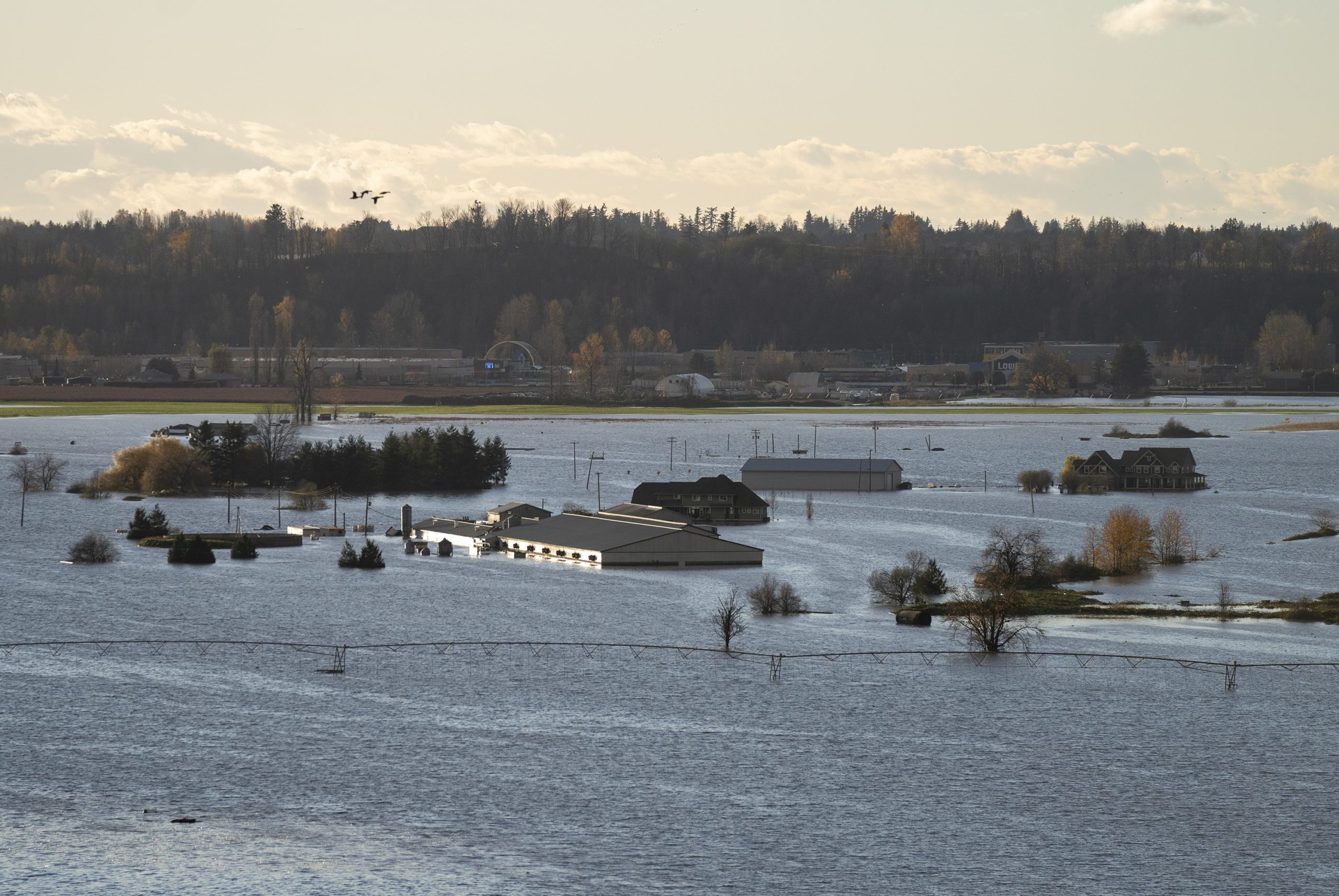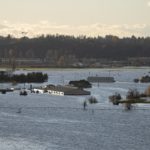B.C. officials should have issued warning about weather: First Nations leader

VICTORIA — The British Columbia government didn't warn residents in flood-prone areas about the potential devastation of torrential rain that left hundreds of motorists stranded on severed highways hit by mudslides and caused at least four deaths, a First Nations leader says.
Terry Teegee, regional chief of the B.C. Assembly of First Nations, said the province could have acted faster after a heat dome this summer claimed nearly 600 lives and a wildfire destroyed much of the town of Lytton in the Fraser Canyon.
"This year alone there's an expectation that everybody should just be ready by now," Teegee said in an interview Monday. "First Nations communities are already at a deficit, even before a wildfire, even before a flood."
Public Safety Minister Mike Farnworth said the province is working with First Nations to involve them and meet their needs.
"One of the things that we obviously want to do when this event is over is to look at where there were gaps and make sure that we address those gaps," he told a news conference.
Environment Canada has issued a special weather statement for B.C.'s north coast. Rain was expected to move south Monday after a so-called atmospheric river dumped unprecedented amounts of rain in southwestern B.C.
Armel Castellan, a meteorologist with Environment and Climate Change Canada, said 40 to 70 millimetres of rain could fall in the Fraser Valley. Upwards of 100 millimetres could potentially fall in the North Shore mountains around Howe Sound.
Another atmospheric river is expected Saturday, he said.
"We're not looking at necessarily the same copious amounts as we saw two weekends ago, but we are looking at a very strong signal through the weekend and into next week. We continue to have active storms," Castellan said. "So I would just caution that we are dealing with very active weather for the foreseeable future, at least as far as the forecast is available."
Teegee said several First Nations communities have already been cut off by flooded roads and they're waiting for resources to be helicoptered to them, possibly before winter storms affect their power supply.
About 85 per cent of First Nations people live in rural areas, he added.
The First Nations' Emergency Services Society works with Emergency Management BC in delivering services. But Teegee said its funding isn't ongoing and resources like food, water and fuel have taken too long to arrive due to "a bureaucratic nightmare" like filling out forms when communities have been evacuated.
"That has to fundamentally change," he said.
Farnworth said over 100 Indigenous and First Nations communities were affected by the flooding and landslides in southwestern B.C. He said the province has ensured culturally appropriate services are being provided by First Nations representatives at a reception centre in Kamloops, for example.
"Emergency Management BC is working closely with the First Nations Health Authority and the First Nations Emergency Services Society to support hard-hit communities," Farnworth said.
Patty Hajdu, the federal minister of Indigenous services, announced $4.4 million in funding Monday for the First Nations Emergency Services Society in B.C. to support those affected by flooding.
"The loss of life, homes, infrastructure, property, and livelihoods, as well as the ongoing disruption to people's lives is devastating," Hajdu said in a statement.
Abbotsford Mayor Henry Braun said farmers in the community's Sumas Prairie area are grateful for support they've received after extensive flooding of their properties and the death of livestock.
"Among this gratitude is also a deep sadness for the losses faced by friends, family and community members," Braun told a news conference. "We know the ramifications of the events of this past week will be long lasting."
A rescinding of evacuation orders for some properties has provided a glimmer of hope, though further evacuations are possible, especially if more rain drenches the region, he said.
The Trans-Canada Highway has not yet reopened in Abbotsford but an eastbound section in one area is available for emergency agriculture operations, Braun said.
City crews working around the clock since last week have managed to repair some dikes on the Sumas River and work is continuing above and below the water. Canadian Armed Forces personnel are helping by walking the dikes to search for weaknesses, cleaning culverts and delivering feed to farms, he said.
Structural engineers have assessed all the bridges they can get to that might have been affected, while geotechnical engineers have inspected more than 88 kilometres of road and 29 culverts, Braun said.
"We need water levels to abate to be able to continue much of this work because there's still a big lake out there," he added.
Farnworth said the province is working with the federal government to waive a one-week waiting period for people to qualify for employment insurance.
B.C. declared a state of emergency last week and issued an order limiting fuel purchases to 30 litres per visit to a gas station to preserve supplies for commercial vehicles delivering essential goods. It also limited access to some highways for essential travel only.
Canadian Pacific, meanwhile, announced it plans to reopen its railway between Kamloops and Vancouver by midday on Tuesday.
CP president Keith Creel said the company's workers faced challenging conditions to restore the service in eight days.
"The following 10 days will be critical," he said in a news release. "As we move from response to recovery to full service resumption, our focus will be on working with customers to get the supply chain back in sync."
The company says it will work with its customers and terminals to clear a backlog of goods.
Highway maintenance worker Ron Hagen of Merritt has viewed damage caused by the flooding and mudslides, after he was among 7,000 people forced from their homes a week ago when the Coldwater River overflowed its banks.
"(On) one of the main roads the water just rushed down there and there is no road left. It just took the asphalt and moved the asphalt wherever it wanted and created this crater and washed everything away," said Hagen, who has continued on the job as an essential worker.
"A lot of homes along the river, their basements were full and (water) was going up to the second floor. It was that deep."
— By Camille Bains in Vancouver, with files from Bill Graveland in Kamloops and Brieanna Charlebois in Vancouver.
This report by The Canadian Press was first published Nov. 22, 2021.
—
This story was produced with the financial assistance of the Facebook and Canadian Press News Fellowship.
The Canadian Press




